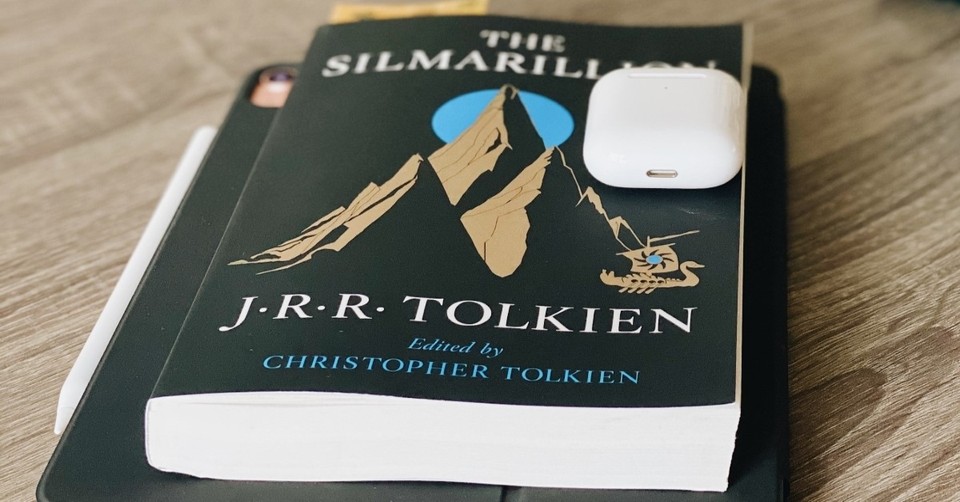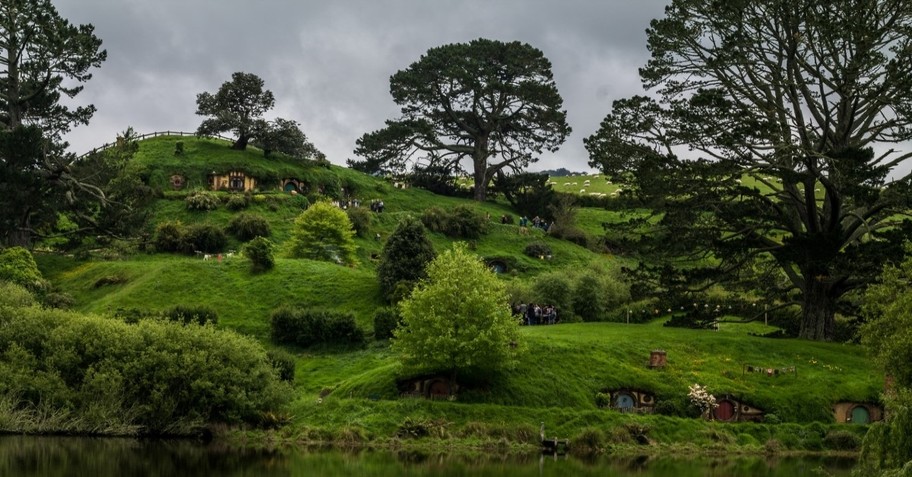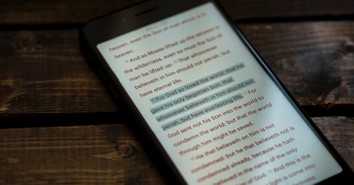10 J.R.R. Tolkien Stories to Read Before Seeing Rings of Power

J.R.R. Tolkien is easily the best-known fantasy author of the last 100 years. If you haven’t read The Hobbit or The Lord of the Rings or seen the various films based on those stories, you almost certainly know at least one person familiar with them.
You may not know that Tolkien wrote many more fantasy works than just his famous ones. As he built his stories about Middle-earth into full-fledged mythology, he wrote numerous other stories about its history leading up to the fight over the One Ring. As a scholar of languages, Tolkien studied and translated famous medieval texts like Beowulf and Sir Gawain and the Green Knight. He also wrote shorter fairy-tale works for his children, some connected in interesting ways with his more famous works.
With Amazon’s The Rings of Power coming out soon, it’s a good time to look at some of his other work. The following is a list of his great shorter works and some of his more accessible Middle-earth writings. Many of these shorter stories have been published separately, but you can also find them collected in anthologies like The Tolkien Reader or Tales from the Perilous Realm.
Further Reading: Does the Lord of the Rings Have Christian Themes?
Photo Credit: Unplash/Madalyn Cox

1. The Tales of Tom Bombadil
Named for one of his most unusual characters in The Lord of the Rings, Tolkien presents these stories as “marginalia” (side items, like the drawings found in many medieval manuscripts) in The Red Book, which tells the hobbits’ history. Tolkien explains in his mock introduction that the poems’ authors are “seldom indicated” and extend from poems attributed to Bilbo Baggins and Sam Gamgee, to silly folktales that hobbits enjoyed.
The range of the work, from a poem attributed to Sam about an “oliphaunt,” to dramatic stories about tragic romances, to rhymes about stone trolls and the man on the moon, makes this book entertaining reading even if readers don’t know anything about the larger Middle-earth context that Tolkien places them within.
Further Reading: 10 Things You Need to Know about J.R.R. Tolkien
Photo Credit: Unsplash/Tobias Stonjeck

2. The Father Christmas Letters
From 1920 to 1943, Tolkien wrote a letter a year to his children, apparently written by Father Christmas, with notes about how they were doing and stories about his life at the North Pole. The letters detail not only his toy-making activities (with help and hindrance from his friend, the Polar Bear) but also various goblins who live near his workshops and create problems occasionally. Some of the letters included drawings that Tolkien made himself to illustrate events.
This book collects the letters and illustrations, along with notes by Ballie Tolkien, wife of Christopher Tolkien, who edited the collection for publication.
Further Reading: Christmas in Narnia
Photo Credit: Unplash/Mockaroon

3. Farmer Giles of Ham
Another story that began as a tale told to his children, Farmer Giles of Ham starts with a foreword describing it as a translation of an unreliable text about “a dark period of the history of Britain.” The faux academic comment is similar to the opening to William Goldman’s novel The Princess Bride, and both books are sly spoofs or homages of fantasy literature.
Farmer Giles is a farmer with a blunderbuss who doesn’t interfere much in other people’s business—and certainly doesn’t plan on becoming a hero. But when a giant appears on his land, Giles manages to send the threat packing, building a reputation as a heroic warrior. All this is fine… until a dragon named Chyrsophylax appears on the scene, and Giles must prove to his neighbors (not to mention the king) that he’s the hero everyone thinks he is.
Further Reading: Who Were the Inklings Besides C.S. Lewis and J.R.R. Tolkien?
Photo Credit: Getty Images/SoumenNath

4. Leaf by Niggle
While Tolkien is famous for saying he disliked allegory, this short story suggests that he was willing to bend that rule in rare cases. Scholars have generally seen it as an allegory about the creative process and the Roman Catholic doctrine of souls being purified in Purgatory before their final destination. Whether you agree with these interpretations, it’s a charming tale with some thought-provoking insights about what we devote our lives to doing.
Niggle is a painter who knows he has a deadline, a long journey he will soon have to take, and that everything he wants to paint must be done first. Unfortunately, his passion project, a painting that began as a single leaf, has grown into a painting of a tree (and everything around the tree). The painting has become so big that Niggle needs a ladder to work on different parts of the canvas. However, it may be that going away on his journey is what Niggle needs to discover what the painting was about in the first place… and what his work will become.
Further Reading: Classic Christian Sci-Fi Books by C.S. Lewis and Others
Photo Credit: Getty Images/simonidadjordjevic

5. Smith of Wootton Major
Written in response to George MacDonald’s short story “The Golden Key,” this fairy tale was Tolkien’s last fiction work published before his 1973 death. While it has elements that parallel MacDonald’s story—especially the idea of someone finding a token from a magic land that takes him on a lifelong adventure—Tolkien includes themes and images that are unique to his work.
In a village called Wootton Major, not far away from the border of Faery, a cook hires an apprentice named Alf. When Alf helps the cook prepare a cake for a feast that only occurs every 24 years, they discover a star that Alf insists comes from the land of Faery itself. The cook dismisses this idea, putting the star into the cake with coins and other trinkets. When one of the children at the feast eats the slice containing the star, he does not realize he now has a star shining on his brow, giving him safe passage when he enters the land of Faery. As the child grows, becoming a husband and a father and a master smith, the star affects his life in surprising ways.
Further Reading: 10 Things You Need to Know about George MacDonald
Photo Credit: Getty Images/NAPA74

6. Mr. Bliss
A children’s book that Tolkien wrote and illustrated but wasn’t published during his lifetime, Mr. Bliss is a fun mix of slapstick comedy and homages to classic children’s stories, from “Goldilocks and the Three Bears” and Wind in the Willows.
The story begins in the countryside, where Mr. Bliss lives and decides one day to buy a new car. Unfortunately for his neighbors, he’s not as skilled a driver as he thinks. His mishaps lead to him and his friends Mr. Day and Mrs. Knight running into three bears in the forest, ruined picnics, various destroyed property… and meeting an exotic animal called a Girabbit.
Further Reading: 15 Classic Christian Fantasy Books for Kids and Adults
Photo Credit: Unsplash/Sarah Brown

7. Sir Gawain and the Green Knight, Pearl, and Sir Orfeo
Being a language scholar who taught many classes on Anglo-Saxon and Old or Middle English, Tolkien studied medieval literature extensively. Sometimes, he did his own translations of famous medieval texts, including these translations of three medieval poems:
Sir Gawain and the Green Knight, one of the most famous stories in the Arthurian canon, shows what happens when a Green Knight shows up in Camelot on Christmas Day to challenge the Round Table. Arthur’s nephew Gawain answers the Green Knight’s challenge to see if he can cut the man’s head off, not realizing the implications of the Green Knight’s challenge.
Pearl tells the story of a man who grieves a pearl he lost, then enters a dream where he finds the pearl again, now a young woman. The man's reaction to finding his pearl and quest to be rejoined with her involves some haunting meditations on mortality.
Sir Orfeo is a fairy tale based on the Greek myth of Orpheus. Like the myth, it follows a man who travels to another world (in this case, the kingdom of Faerie land) to find his lost love and may pay a steeper price than he can bear to bring her back.
After Tolkien's death, Christopher Tolkien edited the translations to be published in one book, which appeared in 1975.
Further Reading: Medieval History Through Literature
Photo Credit: Getty Images/rudall30

8. Roverandom
A fairy story written after Tolkien’s son Michael lost a toy dog on a beach, “Roverandom” combines a story reminiscent of E. Nesbit’s Five Children and It with inside references and tidbits of fantasy geography that later appeared in his Middle-earth writings.
Rover was a normal dog until he nipped at a wizard inspecting the ball that Rover was playing with. After the wizard turns Rover into a living toy dog, he goes from a toy shop to new owners to a beach where he meets a sand-sorcerer. While the sand-sorcerer can turn Rover back into a dog, he is far smaller than he used to be, so Rover heads off to find the wizard who originally transformed him. The search will take Rover to the moon and back, to the Isle of Dogs, and some other surprising places on land and sea before he reaches his goal.
Further Reading: Walter Wangerin Jr's Talking Animal Stories
Photo Credit: Getty Images/PongMoji

9. Beowulf: A Translation and Commentary
Tolkien had many academic accomplishments, but one of his greatest was “Beowulf: The Monsters and Critics,” a 1936 speech that radically changed studies of the Anglo-Saxon poem Beowulf. Nearly a decade before giving this speech, Tolkien had translated Beowulf into English, although he never had it published.
Christopher Tolkien edited the translation for this book edition published in 2014, also containing commentary on the poem from his father’s lectures and notes on the poem. In addition, the book contains poems Tolkien wrote in response to Beowulf: “Sellic Spell,” a poem imagining the story behind Beowulf’s adventures, and “The Lay of Beowulf,” two poems about Beowulf’s adventures designed to be sung to music.
Further Reading: Beowulf: Fiction or History?
Photo Credit: Getty Images/rudall30

10. The Silmarillion
Tolkien’s Middle-earth writings are so extensive that Christopher Tolkien published 12 volumes of material about its history, plus collections of unfinished stories and other material.
The Silmarillion is your best option if you pick one thing to read besides The Lord of the Rings, especially if you want to know the backdrop for the Amazon show The Rings of Power. The show will reportedly focus on material included in the appendices to The Lord of the Rings, but much of that material ties into or builds on the story told in The Silmarillion. This book is the Genesis account of Middle-earth, how it was formed by the great god Eru, and the conflict created when his servant Melkor rebelled against his plans. Melkor’s rebellion eventually includes his second-in-command, Sauron, whose rise to power involves the One Ring that becomes central to Lord of the Rings. The Silmarillion also details the kingdoms of Elves, Dwarves, and Men, whose rising and falling history leads to the kingdoms that must rise again to fight Sauron one last time in The Lord of the Rings.
Three central stories in the Silmarillion appear in different versions published separately: The Children of Húrin, The Fall of Gondolin, and Beren and Lúthien.
Further Reading: Amazon's Lord of the Rings Series to Debut September 2
Photo Credit: Getty Images/Divaneth-Dias
Originally published September 01, 2022.









